By PJ Parrish
Whenever I travel, I read. I mean, like a starving fool. I’ve given up trying to figure out why I don’t have a solid, disciplined reading habit here at home. Maybe I’m too distracted, and as you all know, reading — even for pleasure — requires you to purposefully set aside time. Sort of like being romantic within marriage. Or exercise.
So while in Italy for two weeks recently, I read like crazy. First up, in Rome, was a riveting history of how Michelangelo came to paint the Sistine Chapel ceiling. I’ve been fascinated by this ego-tug between artist and pope ever since I saw The Agony and the Ecstacy in 1965. Charleton Heston and Rex Harrison chewing up the scenery during the Italian Renaissance — che bello!
I never read Irving Stone’s bio-novel on which the film is based. Should have, but glad I didn’t because the book I did read, Michelangelo and the Pope’s Ceiling by Ross King was unputdownable. I found the book at one of our neighborhood library boxes two days before I left for Rome. Serendipity, indeed. One passage:
The pope grew so incensed at Michelangelo’s slow progress and impudent replies that he thrashed him with a stick. Michelangelo had wished to return to Florence for a feast day, but Julius stubbornly refused him permission on the grounds the artist had made so little headway on the project.
“Well, but when will you have this chapel finished?”
“As soon as I can, Holy Father,” replied Michelangelo.
This exchange turns up in the movie thusly:
Pope Julius: When will you make an end?
Michelangelo: When I am finished.
I think the screenwriter improved the dialogue here some, no? Which brings me to my point today. It never ceases to amaze me how much a movie and its book can differ. Sometimes the movie is a sad shadow of a book. But very often, the movie surpasses its source. Not in this case because for me, as much as I love the movie, King’s non-fiction account, as one review put it, wipes away the smudges from the story.
Once out of Rome and into the countryside, I delved into my second Italian literary adventure — Patricia Highsmith’s The Talented Mr. Ripley. We were in Tuscany, not Venice, yet being in tiny Italian aeries, I felt at times like I was hearing Ripley’s footsteps echoing on the wet cobblestones.
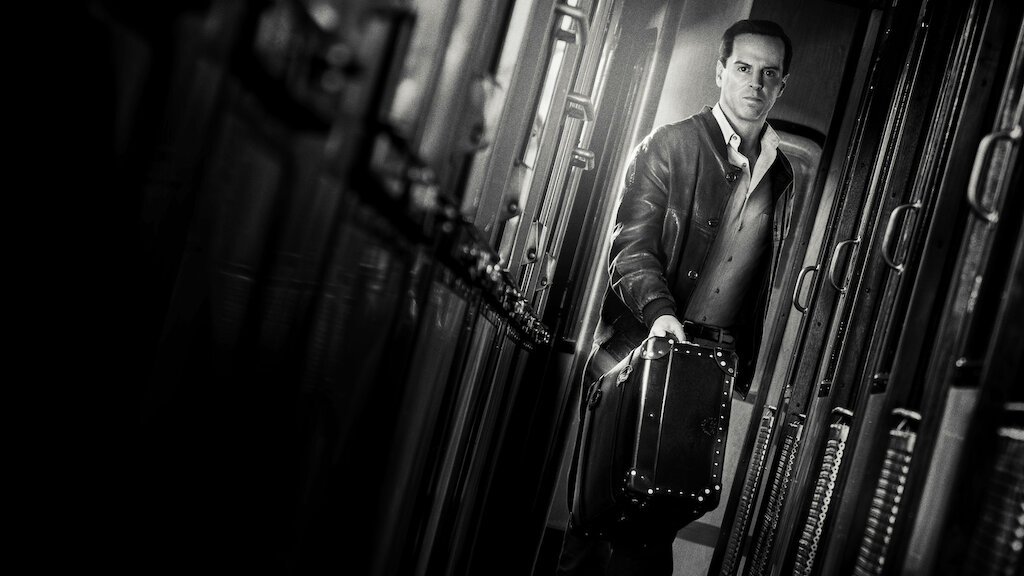
Now I really like the movie with Matt Damon and Judd Law. But I was riveted by the new Netflix series Ripley. The latter’s black and white cinematography (above) is just stunning. Chiaroscuro — a lovely Italian word that translates as “light-dark” — is a film technique wherein contrasts are sharpened to a haunting effect, often to stress a character’s moral ambiguity. Ripley reminded me of one of my favorite characters, Harry Lime in The Third Man. It’s another noir masterpiece that uses the chiaroscuro technique.
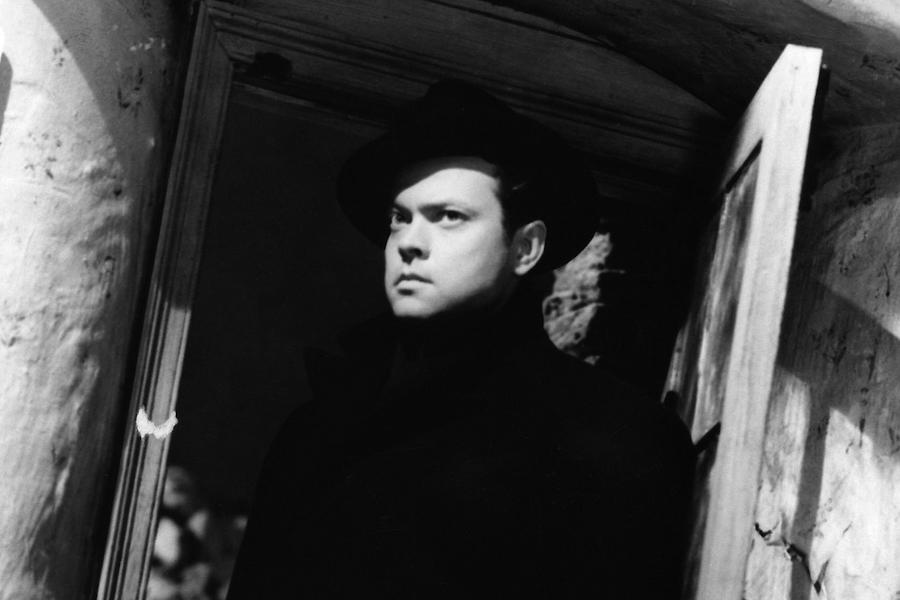
But it also brought to mind The Godfather. Though shot in color, the movie’s contrasts of light and dark symbolize the battle of good and evil waging not just in the Corleone clan but in all men. Cinematographer Gordon Willis was renowned for this style. Director Coppola said of Willis: “Like a Renaissance painter, his images are bold, striking.”
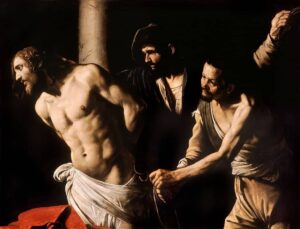
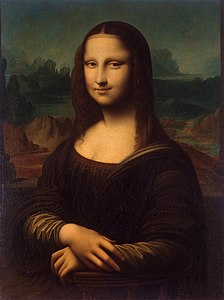
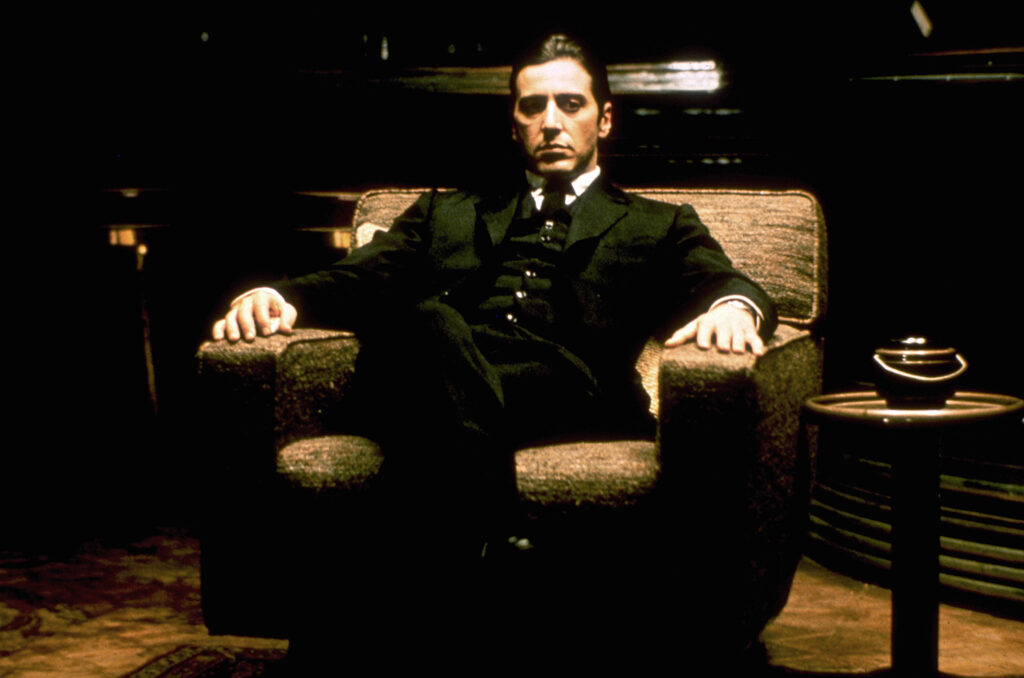
Chiaroscura is a Renaissance concept, of course. Da Vinci used it to turn Lisa del Giocondo into a cheshire cat. Caravaggio, who Ripley is obsessed with, used it to bathe his religious figures in holy light in contrast to lowly humans. But I digress…
I am still finishing Patricia Highsmith’s novel. This is from her book, just after Tom has bashed in Dickie’s head and scuttled the boat in an isolated cove:
At sundown, just the hour when the Italians and everybody else in the village had gathered at the sidewalk tables or the cafe, freshly showered and dressed, staring at everybody and everything that passed by, eager for whatever entertainment the town could offer, Tom walked into the village wearing only his swimming shorts and sandals and Dickie’s corduroy jacket, and carrying his blood-stained trousers and jacket under his arm.
Has there ever been a more captivating sociopath? I am loving this book, just as I have loved all three Ripley movies. Yes, there is a third — Alain Delon as Tom Ripley in the 1960 French thriller Plein soleil (Full Sun). No one knows what it’s like to be the bad man, behind blue eyes.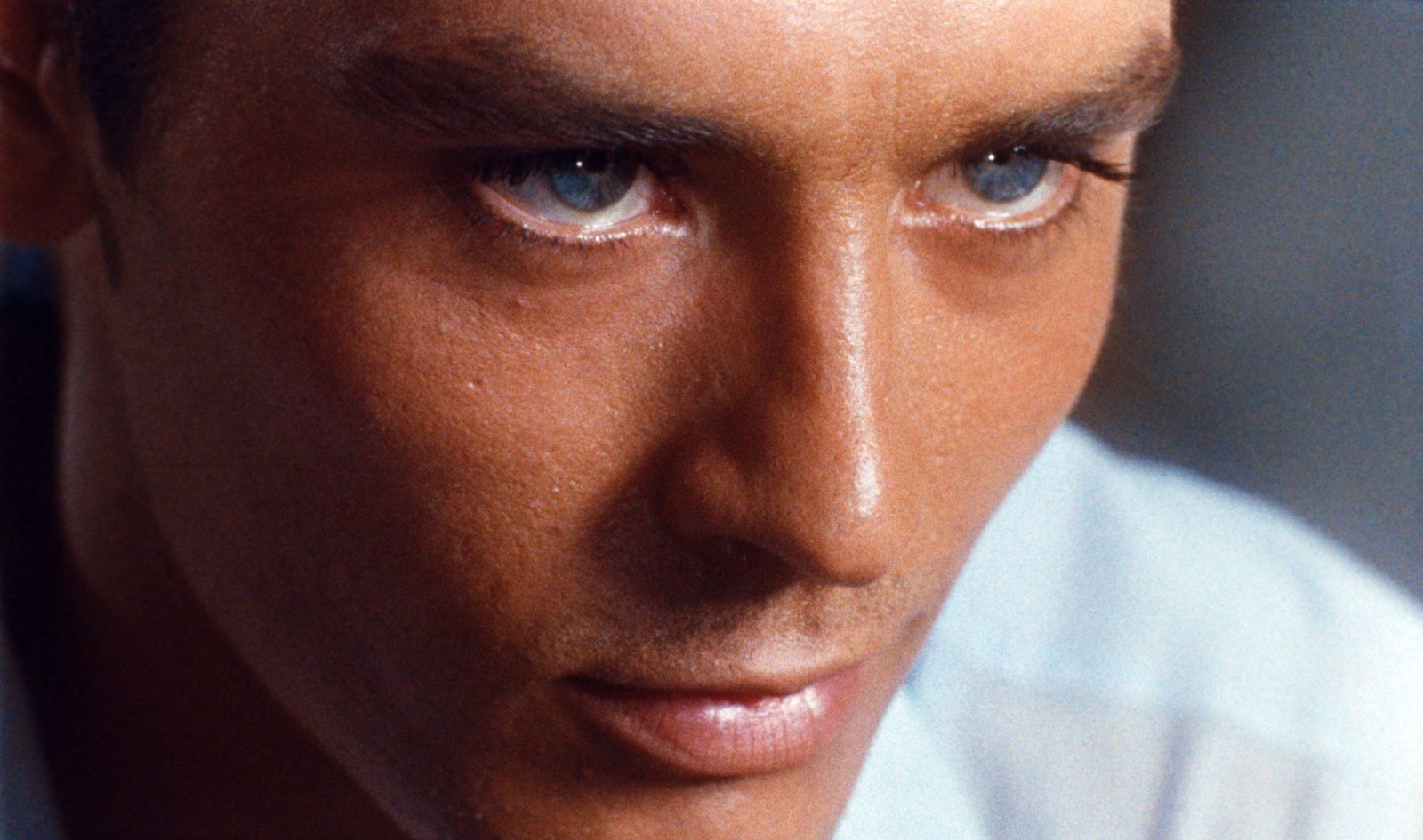
Highsmith’s book is one example, I can attest, where the movies equal the book. And the book does not disappoint.
Whew. Just re-read this post. A little winded and wandering again. Hope you don’t mind. But I had a great time in Italy with Michelangelo and Tom. I leave you all with an open-eneded but related question:
What books have made for really bad movies? Or more intriguing, what movies turned out better than their books? I’ll start: The Bridges of Madison County. Which is a long long ways from Rome.
_________________
Postscript: Archie the condo-bound chihuahua, having a field day in the hills of Tuscany.


“Bridges of Madison County” is an excellent example of why Wim Wenders’ Golden Rule of Film Making #42 is “Don’t adapt novels.” I read the book and saw the movie, and, although the book more or less worked for me, the movie sucked like a fruit bat on a mushy mango. It left me with the image of an old man with his scanty hair plastered to his head in the rain, the antithesis of romance. The rain was probably supposed to be a metaphor for tears or something. Didn’t work.
“Starship Trooper” was sabotaged by whoever directed the “ads” for service. They came across as cynical & manipulative, not at all in tune with the book’s material and theme. Otherwise, the movie was very good.
I love to read on trips. I read much of “The Hobbit” in Butchart’s Gardens in Victoria, “The Demolished Man,” on the way to the Huntington Library, “The Godfather” on a trip to West Virginia. The latter kept me reading way past 1 a.m., facing a meeting at my company’s regional headquarters early the next morning.
Wow…i feel just the opposite about Bridges. Thought the book was dreadful, like laughingly so. But the movie was rather touching. (do like your fruit bat analogy though!).
I remember reading the Dune Trilogy by Frank Harbert about 20 years ago. I remember reading The Da Vinci Code and Angels and Demons, both by Dan Brown. I remember reading the Harry Porter series. I watched the movies adapted from all these books later and nothing they did in the movies could compare to the movies created in my head while reading the novels.
Some movies are way better than the books they’re adapted from, granted. I watched Forrest Gump and never read the book. I believe the movie is worth my time, probably than if I’d read the book.
Also, someone would argue that the Game of Thrones movies surpassed the novels and I’d probably agree. But I still regret not reading the books first before watching the series. Why? I’m still reading the novels till today and don’t know if I’ll ever finish it in a lifetime.
I believe this is one of the subtle reasons parents and teachers are advised not to indiscriminately expose kids to screen at an early age. Videos give kids everything and may deprive them of the creative synergies books will build in their brain as their brain still forms.
When you give kids book to read or read to them, you’re training their brain to create pictures to go in line with those words. They have the capacity to make from the story a world of movie in their head. It may be one of the reasons some kids tend to draw, trying to give expressions to the pictures built in their head from the combinations of words they’ve been exposed to. I did that a lot as a child.
Stephen, I couldn’t agree more about reading vs. video for the development of children’s brains! I cringe when I see parents hand a device to a baby who’s barely big enough to hold it. Yes, it keeps them quiet but, in bygone days, so did laudanum. The long-term consequences worry me.
I loved Thrones the series but didn’t read the books. Probably should, no? I remember reading Da Vinci Code while in Paris (I try to read a book about the country I am in). Thought it was pretty pedestrian, but it DID keep me reading. 🙂 The movie…meh. Goes to show you even Tom Hanks can’t survive bad material. (See Bonfires comment below).
I loved The Hunt for Red October as a movie. I enjoyed it as a book (though I skipped over a lot of the technical stuff).
Sean Connery and Scott Glenn were so good they brought it to life.
LOVE Hunt, the movie! Yes, Connery and the whole cast made it compelling.
Worst good novel>>bad movie adaptation: Bonfire of the Vanities.
So many novels have been elevated on film. I just watched one, The Graduate, and recently wrote about Shane..
A lot of classic noir, e.g., Out of the Past, comes from pulp-style source material. There’s your Chiaroscuro, which in film grew out of German Expressionism.
Yeah, I had to learn about German expressionism (pretty grim stuff) in college as an art minor. It was a rabbit hole I didn’t want to go down in my post. I digress enough as it is. 🙂
BTW, I did not realize that Shane died. Now I have to go and watch it. Again.
Subtle visual at very end, riding through a graveyard…but he is at the top of a mountain! Ascending to Heaven.
Books to movies always brings to mind The Man Who Loved Cat Dancing. The ending of one gave me hope, while the other made me sob, which is probably exactly what the movie makers wanted. I loved, as did millions of others, Janet Evanovich’s One for the Money, but the movie was so bad it was painful to watch. Ditto Must Love Dogs. I’ve never read Gone With the Wind, but watched the movie because it’s used so much in writing examples, and found it so bad, I have no interest in reading the book.
On another note, I read ebooks at night when we’re camping, but I cannot imagine reading while traveling. There’s too much to do, too much to see, too many experiences to soak in. When I travel, I don’t want to miss anything in real life.
I remember really liking the Cat Dancing movie. How does it differ from the book?
I read while traveling only at night, cuz you can only watch so many episodes of Starsky and Hutch in Italian.
Oh, that’s funny! I feel so much better for you because I have pictured you reading all day in your villa and not getting out to explore all the wondrous places around you. I won’t be sad for you anymore.
In the book Cat Dancing, Jay is with Catherine and I believed she would nurse him back to health for the happily ever after. In the movie, he was gut shot and dying, and they left him alone because they knew he wasn’t going to live. It was shocking for me after having loved the book. The rest of the movie was great, though.
i thought the movie adaptation of The Hunt for Red October surpassed the book, because it cut out a lot of stuff I couldn’t follow and cut to the chase.
Like the techincal stuff, right? As Leonard said, leave out the parts readers skip over.
Archie is adorable, Kris! The Snowman by Jo Nesbø. The novel was suspenseful and frightening, about a serial killer who left a snowman at each crime scene. The movie was ridiculous and totally missed the mark. What a shame.
It’s amazing how many really good thrillers/mysteries fail miserably on the screen. Carl Hiaason’s books don’t translate, for example. And the Cruise Reacher movies were awful.
Kris, Archie sure looks like he enjoyed your vacation, too.
The best thing about long plane trips is the chance for uninterrupted reading.
Winds of War and War and Remembrance by Herman Wouk were equally good as books and films–probably b/c the mini-series format had enough time and length to be faithful to the books.
Movies are more like short stories than novels. They simply can’t fit all the meat of a book into a couple of hours screen time. So it’s kind of unfair to compare them.
Also, as Cynthia notes, a great actor can totally make a film come to life.
I liked the movie The Martian better than the book b/c the comic elements (growing potatoes in his own waste) were funnier to see than to read about.
Yes, I agree, re The Martian. I read Weir’s book before I saw the movie because it was such a self-pubbing phemon story. Good book. But I adore the movie. As you note, it captures the main character’s wit and loneliness so well.
I, too, preferred the movie version of The Hunt for Red October. They wisely skipped explaining every bell, switch, and dial on a nuclear submarine. Another movie that cut out the saggy middle of the book to improved effect is Jaws.
Oh fer sure re Jaws. I wrote an essay on the book for an anthology and had to go back and re-read the book, which I hadn’t read since it was published. My god, what a horrible mess it is. The romantic subplot with the sheriff’s wife and Hooper are truly icky. Benchley gives the SHARK his own POV. And the ending? The shark just swims away!!!!! Ugh. But it the book is, in concept, a seminal serial killer book.